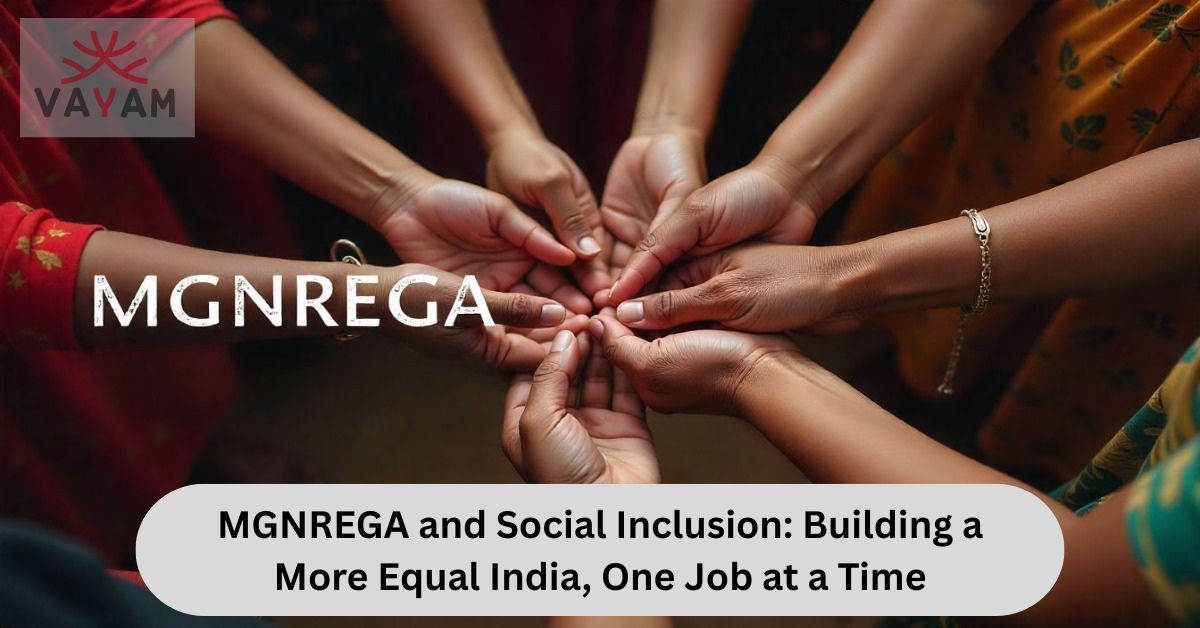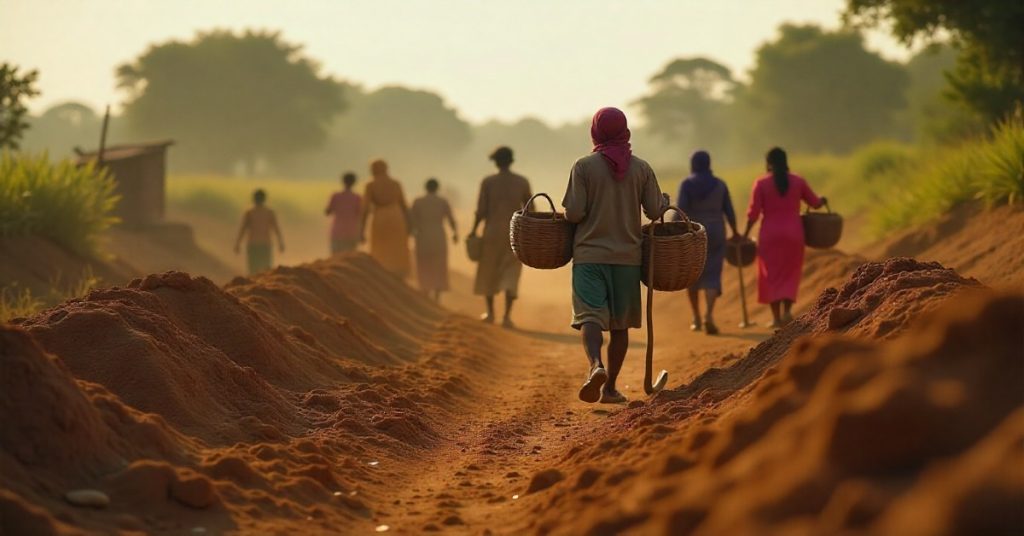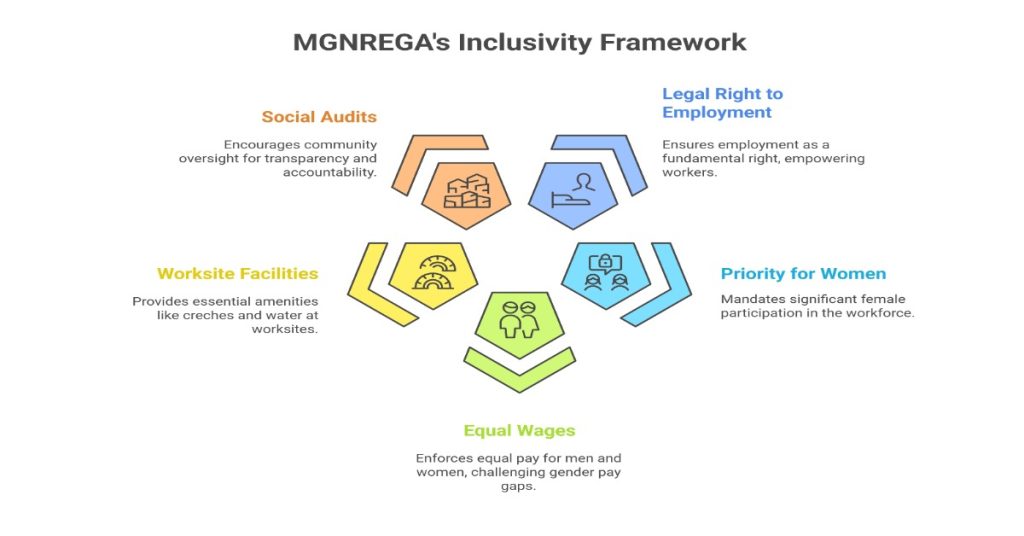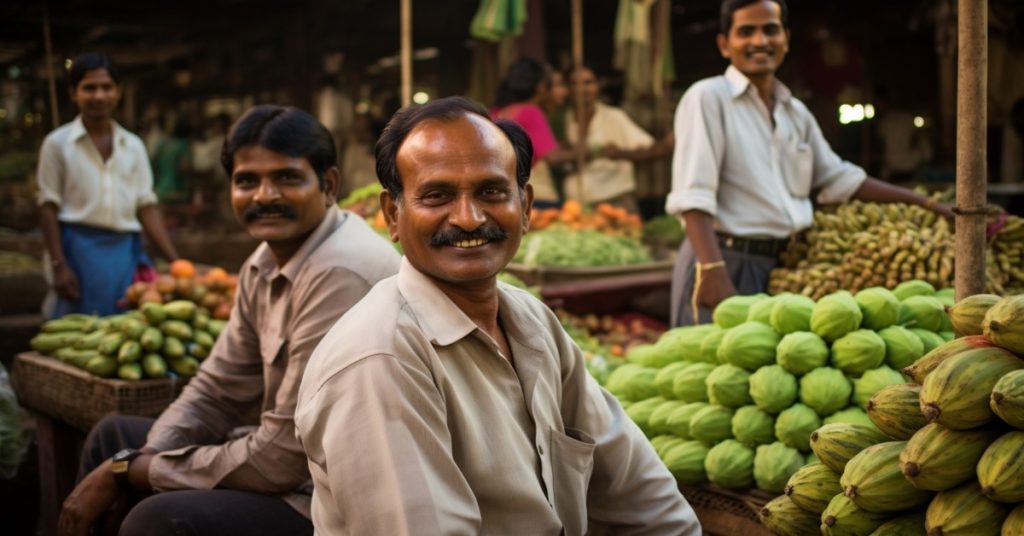
Imagine a government program for social inclusion that does more than just pay wages. Imagine one that actively seeks out the poorest of the poor, the most excluded groups in our society, and gives them not just an income, but a voice, dignity, and a place in the economy. This isn’t a far-off dream. This is the stated mission and the ongoing story of the Mahatma Gandhi National Rural Employment Guarantee Act, or MGNREGA.
For millions in India’s rural heartland, life is a constant battle against uncertainty. Will there be work tomorrow? How will I feed my family if the rains fail? As someone from a marginalized community, will I even be considered for work? These are the painful, everyday questions that haunt many households. Financial instability is hard enough, but when it’s mixed with social exclusion and discrimination, the struggle becomes immense.
This blog post will look at how MGNREGA addresses these deep-seated problems. We will see how this ambitious program creates unique opportunities for marginalized communities like Scheduled Castes, Scheduled Tribes, and women to find economic security and social standing.
What is MGNREGA, Really? A Quick Refresher
Before we get into the details of social inclusion, let’s quickly recap what MGNREGA is. Launched in 2005, it’s a social security scheme that gives any rural adult the legal right to 100 days of unskilled manual work in a financial year, on demand. If the government cannot provide work, it must pay an unemployment allowance.
The core objectives are simple but powerful:
- Employment Generation: Provide a fallback option for rural livelihoods.
- Asset Creation: Build durable community assets like ponds, roads, and irrigation channels that strengthen rural infrastructure.
- Social Protection: Act as a safety net during agricultural lean seasons and droughts.
But woven into this framework is a silent revolution focused on social inclusion.

The Built-In Inclusivity of MGNREGA: More Than Just a Jobs Program
What sets MGNREGA apart from other schemes is its design. It doesn’t just hope for inclusion; it builds it into its very rules.
1. A Legal Right, Not a Charity
This is the most important feature. By making employment a right, MGNREGA empowers the worker. It shifts the power dynamic from asking for help to claiming what is legally yours. This is particularly significant for marginalized groups who are often at the mercy of landlords and powerful local figures.
2. Priority for Women
The act mandates that at least one-third of the workers should be women. This single rule has been a game-changer. It has brought millions of women out of their homes and into the paid workforce, giving them direct control over their own earnings.
3. Equal Wages for Equal Work
MGNREGA stipulates equal pay for men and women. This challenges deep-rooted gender pay gaps common in rural private employment. A woman earning the same as a man for the same work is a powerful step towards economic equality.
4. Worksite Facilities
The guidelines require basic facilities at worksites, such as creches for young children, drinking water, and shade. The presence of a creche removes a major barrier for women with infants, allowing them to work without worry.
5. Transparency and Accountability through Social Audits
The program encourages Social Audits, where villagers themselves can scrutinize the records and implementation of the scheme. This gives a platform for workers, including those from marginalized communities to question authorities and demand their rights.

MGNREGA’s Direct Impact on Marginalized Communities
Let’s break down how these design principles translate into real-world change for specific groups.
Empowering Scheduled Caste and Scheduled Tribe Households
For SC and ST communities, historical discrimination has often meant limited access to land, capital, and stable employment. MGNREGA acts as a critical leveler.
A Reliable Income Source: Data consistently shows that SCs and STs account for a significant portion of total person-days generated under MGNREGA. This provides a predictable source of income, reducing their dependence on informal, and often exploitative, labor markets.
Reduced Migration: With work available in their own villages, many families no longer need to migrate to cities for low-paying, insecure work. This helps preserve family and community structures.
Dignity of Labor: Working on public projects, with a guaranteed wage, brings a sense of dignity. It helps break the cycle of traditional, caste-based occupations that were linked to oppression.
Transforming Women’s Lives in Rural India
The impact of MGNREGA on women deserves its own spotlight. It has quietly become one of the world’s largest initiatives for women’s economic empowerment.
Financial Independence: For the first time, many women have their own bank or post office accounts where their wages are directly credited. This money is often used for children’s education, better nutrition, and healthcare.
Increased Agency and Confidence: Earning an income and working in a group setting boosts women’s confidence and gives them a greater say in household decisions.
A Safer Work Environment: Compared to working on private farms, MGNREGA worksites are generally considered safer and more structured.
Supporting Small and Marginal Farmers
Many MGNREGA projects focus on water conservation, land development, and building irrigation facilities. These assets directly benefit small farmers by improving the productivity of their land. During a drought, MGNREGA work can be the difference between survival and hardship for a farming family.

The Roadblocks: Where MGNREGA Faces Challenges
Of course, the picture isn’t perfect. Many people reading this might be thinking about the common complaints associated with the scheme.
- Delayed Wage Payments: When wages arrive weeks or months late, the purpose of the safety net is defeated.
- Insufficient Work Allocation: The promise of 100 days often remains unfulfilled due to a lack of funding or administrative issues.
- Corruption and Leakages: Issues like fake muster rolls and manipulation of records still exist in some areas.
- Poor Quality of Assets: Sometimes, the assets created are not durable or useful.
These problems need continuous attention. However, the framework of the act provides tools such as the right to information and social audits to address these issues.
The Way Forward: Strengthening the Bridge to Inclusion
What can be done to make MGNREGA even more effective?
- Making Payments Timely: Strengthening the digital payment infrastructure and fixing delays in fund flow is crucial.
- Planning Better Works: Focusing on creating useful, durable assets that communities genuinely need.
- Spreading Awareness: Empowering people with knowledge about their rights under the act increases accountability.
- Convergence with Other Schemes: Linking MGNREGA with other programs can multiply the impact.
Read More
How to Use the MGNREGA Mobile App for Job Applications?
How MGNREGA is Strengthening Agricultural Supply Chains?
How to Conduct Surveys to Improve MGNREGA Effectiveness: A Comprehensive Guide
Conclusion: A Lifeline and a Ladder
MGNREGA is far from perfect, but its vision is profound. It is more than a source of employment; it is a tool for social justice. It recognizes that poverty is not just a lack of money, but also a lack of power, opportunity, and dignity.
For marginalized communities, it serves as both a lifeline and a ladder. By guaranteeing work, promoting gender equality, and empowering the most vulnerable, MGNREGA is helping to build a rural India where growth is a shared experience and social inclusion is a reality.
